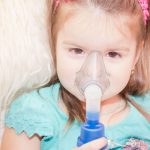Table of Contents
Can a Humidifier Help With Asthma in Children?
Yes, using a humidifier can help improve asthma symptoms in children by adding moisture to dry air and keeping optimal humidity levels between 30-50%. This helps hydrate and soothe irritated airways, loosen mucus, and prevent airway restriction.
Asthma is a chronic lung disease characterized by inflammation and narrowing of the bronchial tubes. This makes breathing difficult and can trigger coughing, wheezing, shortness of breath, and other symptoms. Dry air is a common trigger that can irritate inflamed airways and worsen asthma in children. By adding moisture back into the air, humidifiers may help reduce these asthma symptoms.1.
Understanding Childhood Asthma
Asthma is the most common chronic disease in children, affecting over 6 million kids under 18 in the United States. It causes swelling in the airways which narrows the breathing tubes and produces extra mucus. This combination makes it hard to breathe and can bring on asthma attacks.
Some common triggers for childhood asthma include:
- Colds and respiratory infections
- Exercise
- Outdoor allergens – pollen, dust mites, mold, pet dander
- Indoor irritants – smoke, strong odors
- Changes in weather and temperature
- Air pollution
- Stress or strong emotions
When exposed to these triggers, the airways become inflamed, swollen, and filled with mucus. Smooth muscle surrounding the airways also tightens up, causing bronchoconstriction. This narrows the air passages and makes it hard for air to flow properly in and out of the lungs.
Common symptoms of childhood asthma include:
- Coughing, especially at night
- Wheezing
- Shortness of breath
- Chest tightness or pain
- Trouble exercising or playing
Symptoms can range from mild and intermittent to severe. Asthma attacks involve severe symptoms that do not improve with quick-relief inhalers. Medical treatment is needed right away for attacks.
How Do Humidifiers Help with Asthma?
Dry air is a common trigger for asthma symptoms. Cold, dry air can irritate the airways and cause inflammation and bronchoconstriction. This narrows the breathing tubes and makes symptoms worse.
By adding moisture back into dry air, humidifiers may provide relief for kids with asthma in several ways:
- Hydrate the airways – Dry airways are more easily irritated. Keeping optimal moisture prevents irritation and swelling.
- Loosen mucus – Humidity helps thin out mucus secretions so they can be cleared from the lungs.
- Prevent airway restriction – Added moisture prevents airways from swelling and tightening up.
This can help reduce coughing, wheezing, shortness of breath, and other asthma symptoms. Humidifiers may be particularly helpful at night when asthma symptoms tend to worsen.
Ideal Indoor Humidity for Asthma
The ideal indoor humidity level for asthma patients is between 30-50%. Below 30% humidity allows too much dryness, while over 50% increases mold and dust mite growth which are asthma triggers. A humidity range of 40-45% is optimal.
Using a hygrometer to monitor humidity is recommended when using a humidifier for asthma. This allows you to maintain the 30-50% sweet spot.
 Tips for Using a Humidifier for Child Asthma
Tips for Using a Humidifier for Child Asthma
If you choose to use a humidifier to help with your child’s asthma, here are some tips:
- Pick a cool mist or warm mist humidifier – Both types can effectively hydrate dry air. Cool mist may be safer around kids.
- Use distilled or filtered water – This prevents mineral and bacteria buildup in the humidifier.
- Change water daily – Stagnant water breeds mold and bacteria otherwise.
- Clean regularly – Follow manufacturer instructions for cleaning and disinfecting.
- Monitor humidity level – Use a hygrometer and aim for 30-50% humidity.
- Use at night – Place in your child’s room for maximum effect on nighttime symptoms.
- Keep out of reach – Don’t place right next to crib or bed for safety.
Proper maintenance is key to getting the benefits from your humidifier and avoiding potential mold and bacterial hazards.
Other Asthma Management Tips for Kids
While a humidifier may help, it should not be used in place of standard asthma treatments. Other ways to manage your child’s asthma include:
- Having your child take prescribed daily controller medications to reduce inflammation.
- Avoiding triggers like tobacco smoke, dust mites, mold, pet dander, and other allergens.
- Creating an asthma action plan with your doctor to treat attacks.
- Learning proper inhaler and spacer techniques if using inhaled meds.
- Getting an annual flu shot and practicing good hand hygiene.
- Monitoring breathing with a peak flow meter at home.
Work closely with your child’s doctor to find the right combination of medications, trigger avoidance, and asthma management strategies. A humidifier can be a helpful add-on treatment when used properly.
The Bottom Line
Research shows using a cool mist or warm mist humidifier may help improve asthma symptoms in children by adding moisture back into dry air. The optimal humidity level for asthma patients is 30-50%. Humidifiers can help hydrate irritated airways, loosen mucus, and prevent airway restriction and swelling.
While studies show benefits, more research is still needed. Humidifiers should be used as an adjunct treatment, not a replacement for doctor-prescribed asthma medications and management plans. When used alongside medical treatment and trigger avoidance, humidifiers can be a useful part of controlling asthma in kids.








